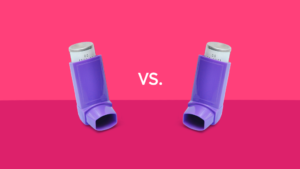How to Read Insulin Syringe Units: Understanding Insulin Dosing
HOME | DIABETES EDUCATION | UNITS HOW TO READ INSULIN SYRINGE? UNDERSTANDING INSULIN DOSING
Over 7.4 million people in the United States use insulin to manage their diabetes. Knowing how to read an insulin syringe is crucial for accurately measuring and administering the medication.
Understanding the markings on the barrel, attaching the needle or IV hub to the adaptor, and measuring the medication dose correctly is essential for the safe and effective use of insulin.
Let’s unravel the mystery behind insulin syringes and gain the confidence to navigate their measurements and components for precise dosing.
Key Takeaways
- Insulin syringes come in sizes of 0.3 mL, 0.5 mL, and 1 mL, and the appropriate size should be matched with the corresponding insulin concentration.
- The needle gauge determines the size of the needle opening, with smaller gauge numbers indicating larger needle openings for more comfortable injections.
- The needle length for insulin syringes varies depending on the volume of the syringe, with 1 mL syringes requiring a 5/16 inch needle for subcutaneous injections.
- It is important to accurately measure and administer insulin dosage by comparing the prescribed dosage to the capacity of the syringe in mL.
Understanding Insulin Syringe Parts
The insulin syringe consists of the needle, adaptor, and barrel. The needle attached to the adaptor is used for injecting insulin, while the barrel contains unit measurements and scales for measuring the insulin dosage.
It is important to note that 1 cc is equal to 1 mL. When reading the syringe, read from the top of the plunger for accurate measurement. The scales on the barrel represent the unit measurements for precise dosage.
Understanding these parts and their functions allows for accurate and confident insulin measurement and administration.
Different Types of Insulin Syringes
Different types of insulin syringes are available in sizes of 0.3 mL, 0.5 mL, and 1 mL to accommodate varying medication volumes based on individual insulin doses under units.
It is important to match the type of insulin syringe, such as U-100 and U-40, with the corresponding insulin concentration to avoid dosing errors, especially for individuals with type 1 or type 2 diabetes.
Additionally, the needle gauge and length impact injection comfort, with smaller gauge numbers indicating larger needle openings and varied needle lengths suitable for subcutaneous or intramuscular injections. Carefully considering these factors will ensure the accurate measurement and administration of the required amount of insulin.
Sizes for Insulin Syringes in ml
To ensure accurate measurement and administration, compare your prescribed dosage to the ml capacity of the insulin syringe. Sizes range from 0.3 mL (30 units), 0.5 mL (50 units), to 1 mL (100 units).
Your healthcare provider can help you calculate the insulin syringe size. The larger the syringe size in ml, the more insulin it can hold.
Understanding the syringe size is crucial for drawing the correct amount of medication and administering it accurately.
Needle Gauge; How to Read an Insulin Syringe
Understanding the needle gauge and insulin syringe sizes is crucial for accurate insulin measurement and administration. Here are the key points to consider:
- Needle Gauge: The needle gauge determines the size of the needle opening, with smaller gauge numbers indicating larger needle openings for more painless injections.
- Insulin Syringe Sizes: Insulin syringes come in three sizes: 0.3 mL (30 units), 0.5 mL (50 units), and 1 mL (100 units), and the markings on the barrel indicate the insulin units corresponding to the syringe size.
- Injecting Insulin: When injecting insulin, always consider the required units of insulin and the visibility of markings on the barrel. Ensure to match the quantity of air to the number of units needed before drawing the insulin into the syringe.
Needle Length for 1 ml, 3 ml, 5 ml and 10 ml Syringe
Understanding the appropriate needle length for 1 mL, 3 mL, 5 mL, and 10 mL syringes is crucial for accurate administration of medication.
The needle size for insulin syringe sizes varies depending on the volume of the syringe. For a 1 mL syringe, a 5/16 inch needle is suitable for subcutaneous injections. A 3 mL syringe requires a 1/2 inch needle, while a 5 mL syringe needs a 5/8 inch needle.
Lastly, for a 10 mL syringe, a needle length of 1 inch or longer is appropriate for subcutaneous injection. Understanding the needle length for each mL syringe is essential when preparing to inject insulin accurately.
How to Combine Measurements
Take note of syringe markings for insulin units. Use the correct ml syringe for prescribed insulin amount.
Align the plunger with the marking on the barrel for exact insulin measurement.
Inject insulin by pushing the plunger to the corresponding mark on the barrel.
Calculating Your Dosage of Insulin Syringe for Type 2 Diabetes
To accurately measure your prescribed insulin dosage for Type 2 Diabetes, align the plunger with the marking on the barrel of the syringe. Ensure that the units of insulin align with the syringe size.
For example, if your prescribed dose is 40 units, consider using a 0.5 mL syringe, which can accommodate up to 50 units. When drawing the medication into the syringe, align the top of the plunger with the marking that corresponds to your required dose.
When injecting, push the plunger to the exact marking to deliver the precise amount of medication for your subcutaneous injection. Consult your healthcare provider or pharmacist to confirm the appropriate insulin syringe size for accurate measurement and administration of your insulin dose.
Purchasing Insulin Syringes
When purchasing insulin syringes, consider the insulin dose and needle size. Choose the syringe size for accurate measurement of insulin. Select the needle gauge and length for comfortable injections. Ensure the syringe allows accurate measurement, especially for doses under 50 units.
Defy Medical for Quality Products
When it comes to insulin syringe products, Defy Medical offers a comprehensive range to meet specific needs and provide reliable support. Defy Medical provides a selection of insulin syringes designed for accurate and easy administration, promoting patient independence and well-being. P
atients can receive assistance with insulin syringe orders through Defy Medical’s Patient Support team, ensuring that the right insulin syringe is chosen based on the prescription and guidance from healthcare providers. Different sizes, gauges, and needle lengths are available, and Defy Medical can help you in choosing the appropriate insulin syringe for your insulin dose.
These insulin syringes are essential for injecting the correct units of insulin and are a crucial tool for individuals who use insulin pens or require regular injections to manage their condition effectively.
Demystifying Insulin Syringes
Understanding insulin syringes involves grasping the following points:
- Insulin syringes come in various sizes and needle gauges to accommodate different medication volumes and injection preferences.
- The size of an insulin syringe refers to its maximum capacity in milliliters, and the specific syringe needed is determined by the combination of syringe size, gauge, and needle length.
- Knowing how to read the syringe markings is crucial for accurate dosing, enabling you to measure the right amount of insulin for injection.
- Needle gauge and length are important factors to consider based on individual needs, preferences, and injection requirements, ensuring a comfortable and efficient experience.
Injecting Insulin With a Syringe
Accurate insulin administration requires selecting the right syringe size and gauge based on prescribed insulin dosage and injection site. Syringe sizes may hold 30, 50, or 100 units, and the scale on the barrel shows the amount of insulin.
When preparing to inject insulin, ensure that the correct syringe matches the insulin concentration. Pay attention to the needle size, as it affects injection comfort. The needle length determines how deep the injection goes, based on the injection site.
Rotate injection sites to prevent lumps or skin changes and ensure proper insulin absorption. Mastering how to read an insulin syringe and understanding the units of insulin will help you inject insulin accurately.
Try to use one area of the body consistently for your morning shot and another are for your evening shot. Many people find it easier to inject their legs in the morning before they get dressed and to save their arms and abdomen for their evening shots.
https://www.urmc.rochester.edu/childrens-hospital/endocrinology/injection-site.aspx
Frequently Asked Questions
How Much Is 1 Unit of Insulin in a Syringe?
1 unit of insulin in a syringe is equal to 0.01 mL. Match up the plunger seal and line with the readable scale on the barrel to ensure accurate medication dosing.
What Units Are Marked on an Insulin Syringe?
Insulin syringes are marked with lines on the barrel to indicate units of insulin. Each line corresponds to a specific number of units.
Is 10 Units of Insulin Equal to 1 Ml?
Yes, 10 units of insulin is equal to 0.1 mL in a U-100 insulin syringe. Always check the syringe markings to ensure accurate measurement. Using the correct syringe for the insulin concentration is crucial to avoid dosing errors.
How Much Is 0.25 on Insulin Syringe?
0.25 mL on an insulin syringe represents 25 units of insulin. Match up the plunger seal and line with the readable scale on the barrel to determine the medication dose. The tip shows ‘cc’ equals mL.



